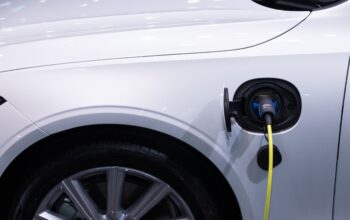As electric vehicles (EVs) become increasingly popular, addressing the challenges of long-distance travel and the associated charging infrastructure is crucial for their widespread adoption. While EVs offer numerous benefits, including environmental sustainability and lower operating costs, the limitations in terms of range and charging infrastructure pose significant challenges for long-distance travel. In this article, we will explore these challenges and discuss potential solutions to ensure seamless long-distance travel in electric vehicles.
Challenges for Long-Distance Travel in Electric Vehicles:
Limited Range Anxiety: Range anxiety is one of the primary concerns for EV owners when it comes to long-distance travel. Unlike traditional gasoline-powered vehicles, which can cover hundreds of miles on a single tank, EVs have limited driving ranges on a single charge. Although range varies among EV models, it’s typically between 100 and 300 miles, depending on the battery’s capacity and efficiency.
Charging Infrastructure Gaps: The availability of charging infrastructure, especially fast-charging stations, can be sparse in some regions, making it challenging for EV owners to plan long-distance journeys. Gaps in the charging network can lead to concerns about whether charging stations will be available when needed.
Charging Time: While home charging is convenient and slow-charging options are readily available, long-distance travelers require faster charging solutions. Traditional Level 2 chargers are slower compared to the gasoline refueling process. Fast-charging stations are essential to minimize downtime during long trips.
Solutions to Address These Challenges:
Improvements in Battery Technology:
Extended Range: Advances in battery technology are steadily increasing the driving range of EVs. Newer models offer ranges that rival those of many gasoline-powered vehicles, reducing range anxiety. Moreover, ongoing research and development continue to push the boundaries of EV range.
Faster Charging: Next-generation batteries are designed to accept higher charging rates, reducing the time required for a full charge. Fast-charging stations, equipped with high-power chargers, are becoming more common and can charge EVs significantly faster.
Expansion of Charging Infrastructure:
Government Initiatives: Governments around the world are recognizing the importance of charging infrastructure. Many offer incentives and grants to encourage the development of charging stations, especially along highways and in rural areas.
Public-Private Partnerships: Collaborations between public and private sectors can accelerate the deployment of charging infrastructure. Automakers, charging network providers, and governments can work together to expand the charging network.
Highway Charging Corridors: The establishment of charging corridors along major highways and interstates is critical for long-distance travel. These corridors ensure that EV drivers can access charging stations at regular intervals throughout their journey.
Destination Charging: Hotels, restaurants, and shopping centers are increasingly installing EV charging stations to attract customers. This trend provides opportunities for travelers to charge their vehicles while they stop for leisure or meals.
Innovative Charging Solutions:
Battery Swapping: Some companies are experimenting with battery swapping stations, where depleted EV batteries are quickly replaced with fully charged ones. This approach can drastically reduce charging times, especially for commercial fleet vehicles.
Mobile Charging Units: Mobile charging units, similar to gasoline tankers, can be dispatched to stranded EVs to provide emergency charging support. These units can temporarily address charging infrastructure gaps.
EV Trip Planning Apps:
Several smartphone apps and websites are available that help EV drivers plan long-distance trips. These apps provide real-time information on the location and availability of charging stations, helping drivers make informed decisions during their journeys.
Improved Public Awareness:
Raising public awareness about the capabilities and limitations of EVs is crucial. Education campaigns can help dispel myths about range anxiety and promote the idea that long-distance travel in EVs is not only possible but increasingly practical.
Real-Life Examples:
Several regions and countries have already made significant progress in addressing long-distance travel challenges for EVs:
Europe: The European Union is investing heavily in expanding its charging infrastructure. The Ionity network, backed by major automakers, is rapidly deploying high-power charging stations along major European highways. This initiative aims to provide reliable charging options for long-distance travelers.
United States: The U.S. federal government and individual states are funding the development of charging infrastructure. Programs like the “EV Corridor” in California and the “Drive Electric Florida” initiative are building comprehensive networks of charging stations to support EV travel.
China: China has one of the world’s most extensive EV charging networks. The country’s “charging pile” initiative has led to the rapid deployment of charging infrastructure in urban areas and along highways.
Long-distance travel in electric vehicles is gradually becoming more accessible and convenient due to advancements in battery technology and the expansion of charging infrastructure. While challenges such as range anxiety and charging station availability persist, ongoing developments in the EV industry and government support are rapidly addressing these issues.
As electric vehicles continue to gain popularity and charging infrastructure becomes more widespread, the vision of long-distance travel in EVs will increasingly become a reality. Electric vehicles offer a sustainable and environmentally friendly mode of transportation, and the ongoing efforts to address long-distance travel challenges are driving the EV revolution forward. With the right combination of technology, infrastructure, and public awareness, the era of practical and convenient electric vehicle travel over long distances is on the horizon.
